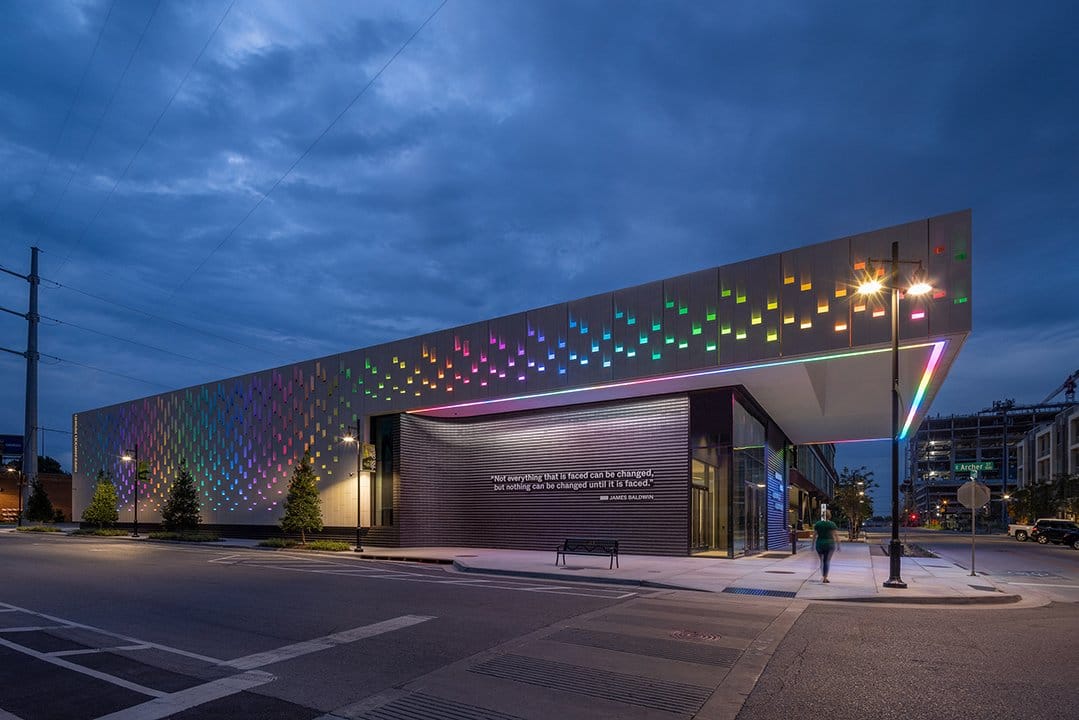
In May of 2021, Tulsa marked the 100-year anniversary of the Tulsa Race Massacre. People from around Oklahoma and the rest of the country converged in the Greenwood District to commemorate the tragic events that took place May 31-June 1 in 1921.
The history of the Tulsa massacre was in the mainstream news and part of the public conversation, as many people found themselves hearing for the first time about the tragedy that left hundreds dead, more than $27 million in property damaged and destroyed, thousands of survivors’ lives altered and untold generational wealth erased from existence.
More than 35 square blocks that were known as “Black Wall Street,” one of the nation’s wealthiest black communities, had been eviscerated — and for nearly a century, its story was kept out of the spotlight. Until 2019, the state of Oklahoma did not include the massacre as a mandatory part of public school curriculums.
Despite that, there had been growing interest in the Tulsa Race Massacre even before the centennial. One of the primary responses was the Greenwood Rising History Center, which is an interactive museum that brings the story of Tulsa’s Black Wall Street to life.
“Greenwood Rising is an immersive experience around the history of Tulsa’s Greenwood District, which was the historic African American community,” says Greenwood Rising Curator Hannibal B. Johnson. “The idea is not to just share the local history, but contextualize that history with other history from the United States during that period.”
Johnson is an attorney and the author of Black Wall Street 100: An American City Grapples With Its Historical Racial Trauma. He has also been with the Greenwood Rising project since its inception.
“I was in on the ground floor of the 1921 Tulsa Race Massacre Centennial Commission. We started in 2015,” Johnson says. “We were started by Senator Kevin Matthews of Oklahoma. The jewel in the crown really was Greenwood Rising — this teaching facility, this museum that we wanted to create. So, we worked with Local Projects, which is an exhibit design firm of national acclaim located in Manhattan. My role as local curator was really to construct the narrative. The museum is primarily a narrative facility.”
Greenwood Rising, at 23 N. Greenwood Ave. in Tulsa, opened its doors for the first time in June of 2021 during the centennial anniversary. The 11,000-square-foot museum takes visitors on a journey through time that starts before the massacre and continues through the rebirth of Greenwood. It is divided into four distinct galleries: The Greenwood Spirt, Arc of Oppression, Changing Fortunes and Journey to Reconciliation.

“Greenwood Rising is an immersive experience for understanding the history of African American history in Tulsa, specifically the rise and demise and rebirth of the Greenwood District and the area effectively known as Black Wall Street,” says Executive Director Raymond Doswell.
Instead of filling the site with just photographs, audio stations and artwork, Greenwood Rising officials wanted to give museum-goers a feel of what life was like on Black Wall Street by using holograms and interactive features. An example includes being able to go into a barbershop and listen to barbers talk about the current events of the early 1900s.
“And the idea here is that we want this space to be accessible and engaging for all folks,” Johnson says. “And we know from research that people have various learning styles. There are people who are kinesthetic learners. They learn by sort of engaging with the environment. There are people who are visual learners. There are verbal linguistic learners. So we wanted this facility to appeal to all kinds of learners, so that there’d be something for everyone to see and engage with that would be meaningful to them. And that everyone would get the core message.”
Johnson said that message is the foundation of Greenwood Rising.
“The core message is the imperative of our shared humanity — the imperative of recognizing each other as fellow travelers, as fellow human beings entitled to dignity and respect,” Johnson says. “And when that doesn’t happen, when there’s not that celebration of humanity and difference, really bad things can happen. And those really bad things are things that we want to prevent. We prevent them by knowing, not ignoring.”

Doswell took over as the Greenwood Rising executive director in January after a nearly three-decade stint as vice president of the Negro Leagues Museum. He sees his new position in Tulsa as a chance to tell the complete story of Black Wall Street and not just the incomplete narratives that have proliferated through the media.
“You don’t want to just dwell on one side of it. Everything is nuanced. We can say, for example, Black Wall Street was important because you had the wealth of black people here,”
Doswell says. “But it wasn’t a utopia. You know, it wasn’t necessarily an oasis because there were still poor blacks in and around this area too. We’re trying to understand, too, what the motivations of whites were in why they felt so slighted or whatever, that they wanted to attack the black community. It wasn’t just pure racism. There were economic reasons, and those are things we need to explore more in the exhibition.”
In the two years since the Greenwood Rising History Center opened its doors, men, women and children of all races, ethnicities and socio-economic backgrounds have visited and experienced it. Regardless of who comes through the front doors, the focus is on the people of Greenwood.
“I want folks to understand that the narrative here is not the narrative of the massacre,” Johnson says. “We don’t have a massacre museum. We have a museum that celebrates Tulsa’s historic Greenwood District. The massacre is an event that occurred in the context of a community. The museum is about the full breadth of that community.”

